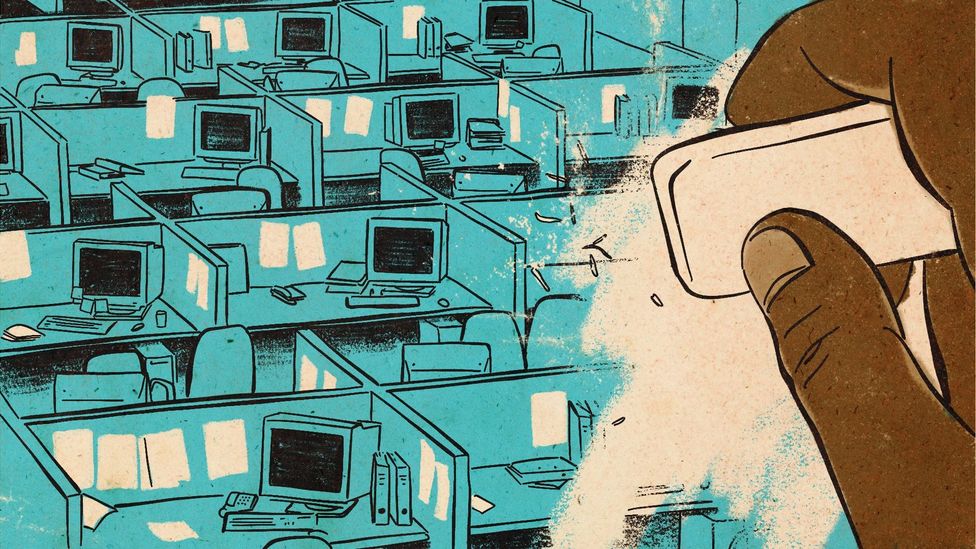A New, Practical Pandemic Workforce Alternative
"It is tempting to believe that major cities will return to their pre-pandemic glory and that COVID-19 is nothing more than an anomaly. Cities will undoubtedly remain the economic and cultural hubs, but in the post-pandemic world, they might not regain the allure they have enjoyed in the past.""It was not long ago that Detroit was one of the most prosperous towns in the U.S. and was known for its industriousness and innovation. Over time, Detroit and the automotive industry lost their competitive edge, and the Motor City first began losing prominence and ultimately faced bankruptcy prospects.""The critical question is what cities can offer to attract talent, businesses and investments, if technology is making geography increasingly irrelevant."Murtaza Haider, professor of Real Estate Management, Ryerson University, Stephen Moranis, real estate industry veteran, Financial Post

Our urban landscape is changing. Once again. There was a time when prosperous middle-class people couldn't wait to leave urban centres to relocate to the suburbs where there was green spaces, larger homes and lots with gardens to raise a family, available at lesser cost than in the cities. Leaving the urban core to the lower middle class wedded to traditional city living and the larger class who remained where they were, who couldn't afford to move, mired in poverty.
And then came a reversal with the trend moving toward urban renewal and gentrification bringing a return to city living, when the poor found themselves pushed out of the downtown core unable to pay the new higher rentals, to the outskirts or to become homeless. There is nothing static about human movement geared toward benefiting those who are financially flexible enough to better their prospects by taking advantage of every new trend that appears over the horizon.
Now it appears that the global pandemic in less than a year has once again upended the social structure of urban life. Not that some corporations hadn't already decided to experiment with large parts of their workforce working remotely, reducing the need for costly real estate where workplaces could be shared among a half-dozen people who might physically appear from time to time before retreating once again to a remote workplace in their home.
The separation of work and home has dissolved, with one's home playing first fiddle to one's employment. In the process juggling responsibilities to one's private life inclusive of child care and time away from the work environment, even when it's your own home, complicating life for the employed and reducing operating costs for the employer.
Remote working has become the norm, aside from workers in the retail industry and those working manual jobs that keep them directly in the workplace, along with factory workers struggling to observe distancing in difficult, tight physical spaces. There is increasing comfort between employers and their workforce within the tech-enabled work environment, however, where lines between home and office have been irrevocably blurred.
The test runs previously embarked upon, have been accelerated by the exigencies of exercising caution and care when at all possible during the pandemic. Company executive elite are paid to enhance the bottom line and that is done through many innovative means, and now that includes reducing real estate imprint. With the use of artificial intelligence over 4,750 earnings calls, Bloomberg LP was able to research that one in 8 corporate executives contemplate a reduction in spatial footprint.
 |
| Many are spending more time than ever inside their homes, as remote work, distance learning and social distancing shape the workweeks of many families |
Plans are afoot and have advanced toward slashing office space, branch or outlet closures while taking steps to renegotiate rents in a rental marketplace where there are now large empty gaps and building owners are anxious to make deals to retain renters in their commercial properties. The decline in demand for office and retail real estate has seen an opposite effect in warehousing properties, along with commercial spaces linked to retain logistics.
Online purchasing by the social distancing public consumer has boomed in lock step with a decline in in-person shopping, enhancing the need for warehouses and logistics hubs, now with more demand than in the past, leading to expanding services. Amazon Canada for example is building two new 'fulfilment' centres, in Hamilton and Ajax along with five more delivery stations throughout Ontario for a total of 16 logistic centres in Canada.
Technology adoption has been accelerated with new tech advancing in terms of months, seeing technology sales on the rise. Large technology firms are not now expanding their real estate empires. Pinterest Inc. recently paid a penalty to withdraw from its 490,000 square-foot lease in San Francisco, of $90 million to achieve its release. With Silicon Valley speedily adapting itself to remote workplaces, employers too are no longer harnessed to expensive-to-rent apartments in town.
Median rents for studio apartments in San Francisco have been reduced by 35 percent from the previous year and rental markets in cities like Boston and New York, known for their sky-high rental costs are now softening. New York and other cities now vaguely resemble ghost towns where hundreds of millions of office space rentals have been emptied of their client-base. Storefronts have been boarded up throughout the city, including parts of Manhattan.
Analysts are studying how affected the urban core of ciies have been, losing their competitive advantaqge by the growing reality of teleworking, cloud computing and video-conferencing with the long-term impact of remote working extending beyond the methods by which employees have adapted to a changed work practice where companies now can hire workers anywhere in the world with no requirement of relocating to expensive cities.
 |
| Long-term remote work has completely reshaped the 9-to-5 and blurred the lines between home and office |
Labels: Business, Global Pandemic, Real Estate, Remote Connection, Workforce

0 Comments:
Post a Comment
<< Home